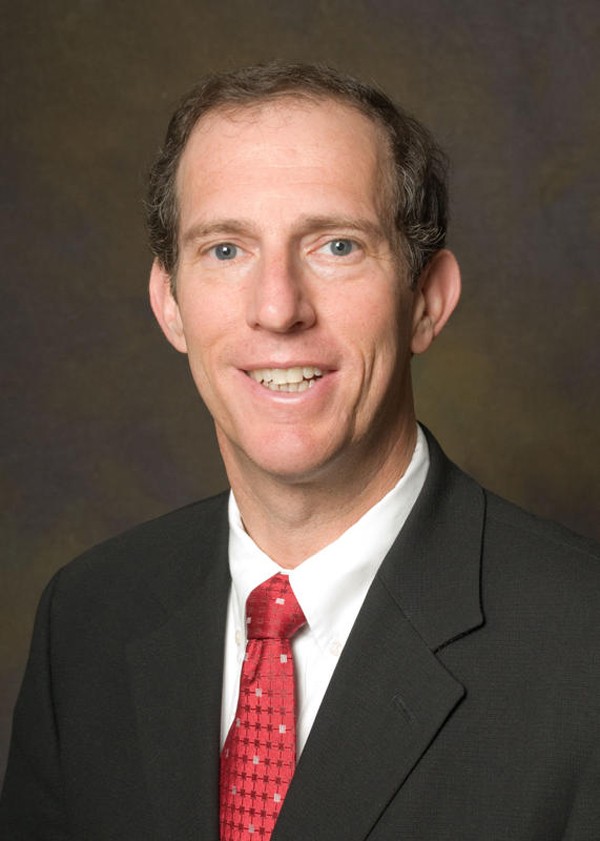The 124-year-old Tennessee Brewery building may live on another 100-plus years, thanks to developer Billy Orgel.
Earlier this month, Orgel closed on his purchase of the much-beloved former home of Goldcrest beer. Before Orgel stepped in this summer, the fate of the long-vacant, historic, downtown structure seemed grim.
The building’s leasing agent, James Rasberry, had said the building would meet the wrecking ball by the end of the summer unless a serious buyer stepped in. That motivated a group of investors — restaurateur Taylor Berger, attorney Michael Tauer, commercial real estate executive Andy Cates, and communications specialist Doug Carpenter — to organize a pop-up beer garden inside the brewery to raise awareness about the need to save the building. Hundreds attended the “Untapped” beer garden event from late April to early June.
Shortly after “Untapped” ended, news broke that a then-anonymous buyer had a contract on the building. That buyer turned out to be Billy Orgel, Shelby County Schools board member and president of cell phone tower development firm Tower Ventures. Now that the purchase is a done deal, Orgel is speaking out about his plans for the space. — Bianca Phillips

Billy Orgel
Flyer: What are your plans for the brewery?
Billy Orgel: It needs to be residential because it’s a residential neighborhood. It’s not Overton Square. It’s not in the middle of a commercial area. You’ve got office, a little commercial, and residential on South Main, so it needs to be in line with the rest of the area. We’ve got a lot of great projects going on with the Chisca [Hotel being turned into apartments] and other things, so I think the brewery is a natural fit for residential.
It’s a huge building. Would all of that be residential?
The funny thing is, is not a huge building. It’s 64,000 square feet. It looks like a huge building because it has volume. But it’s not big. It’s just that architecturally, it sucks you in.
What drew you to save that building?
It’s outstanding, architecturally. It’s a natural progression for things to get rehabilitated downtown. If you walk in there and look up at that grand staircase, you’ll see all the natural light coming in. Once you get above the first floor, you’ve got a fantastic view of the river, and it only gets better as you ascend the stairs.
Are you planning to keep the building’s bones as they are? Will it look the same?
When you do historic rehab, you try to get it back as close as possible to what it looked like. In order to make the project work, you apply for historic tax credits, so you have standards you have to uphold. The building needs to look substantially as it did when it was constructed. The National Park Service applies a reasonable-ness to that. Just because you like distressed brick, that’s not the way it ever looked. You have to go back to the way the building looked. The windows have to be restored. The brewery was built in 1890. We don’t have that many structures left like that.
James Rasberry has said the brewery building came with a lot of challenges and that’s why it took so long to find a buyer. Are you up for it?
Historic renovations are tough. That’s why the government gives you some incentives [with tax credits]. It’s easier to go out to Collierville or East Memphis and build something new, but you don’t have the same character in those cases. Architecture was art [when the brewery was built], so you’re trying to preserve a piece of art.
Do you have experience with rehabilitating historic buildings?
My experience downtown has been to either build or rehabilitate older buildings, which I’ve done with a series of partners over the years. Jason Wexler and Adam Slovis and I did some buildings on Main Street, and then we began to partner with Henry Turley. Along with Henry, we’ve worked on South Junction, [a new building project adding] 280 apartments on South Main. We were involved in [rehabbing] The Cornerstone Flats at 114 South Main and the Main Street Flats, where we combined four buildings into about 12,000 square feet of commercial and 33 apartments. That’s at 99, 101, 103, and 105 South Main. And we did Radio Center Flats at Union and Main. That has the big radio marquee on it.
What’s the timeline for completion of the brewery rehab?
I think it will take eight to 10 months, a 2016 completion.